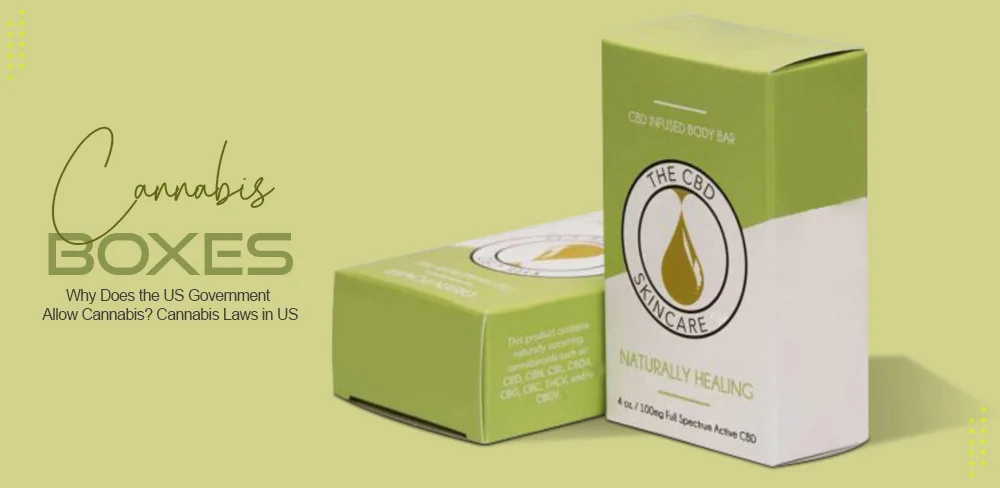How Medical Cannabis used to cure Health Issues -US Pharmacist
Cannabis Boxes have experienced an upward demand c...

Since the late 20th century, there has been a heightened movement in the United States to allow marijuana. In 2012, Washington and Colorado approved ballot initiatives to legalize recreational marijuana. In 2019, more than 30 states in the United States authorized the use of marijuana, although it remained illegal at the federal level. This begs the question: why was marijuana once illegal?
The short answer is racism. It was a drug that was not widely used by Americans in the early 1900s, as it was commonly known in the United States at the time.Amid growing fears among Mexican immigrants, hysterical allegations about the drug began to circulate, including accusations that it caused bloodlust. Additionally, the term "cannabis boxes" hase been largely replaced by "anglicized marijuana," which some have speculated is intended to promote drug alienation and therefore xenophobia. Many states began to pass weed ban laws around this time.
It was officially banned for all uses (including medical) with the passage of the Controlled Substances Act (CSA) of 1970. Several attempts to reorganize the cannabis box under the CSA have failed, and the United States Supreme Court has ruled against Oakland buyers in the United States. Cooperative and Gonzales oppose Raich's view that the federal government has the right to regulate and criminalize cannabis, even for medical purposes. Despite this, states and other jurisdictions continued to implement policies that violate federal law, beginning with the passage of California Proposition 215 in 1996. States had legalized medical cannabis by 2016, and the first two states, Colorado and Washington, legalized recreational use in 2012.
Around the same time, efforts to regulate drug trafficking began, and laws were passed across states that introduced penalties for drug abuse and counterfeiting undetected drugs and the diversion of those identified as toxic was considered. Toxicology legislation usually requires either marijuana packaging labels indicating the harmful effects of substances or a ban on their sale outside authorized pharmacies without a doctor's prescription. Those who needed labeling often needed the word "poison" when the drug was not dispensed from a pharmacy. Other rules prohibited sales to minors as well as filling restrictions.Some pharmaceutical laws specifically mentioned the drugs covered by the regulation, while others did not and left the matter to medical experts. those which generally included references to cannabis, either in the category of cannabis seed packaging and its preparation or hemp preparation,
In 1906, the US Congress passed the Pure Food and Drug Act, which required that certain specialty drugs, including cannabis, be labeled precisely with the contents.In the past, many drugs were sold as proprietary drugs with secret ingredients or misleading labels. Even after the rules were adopted, the availability of drugs continued to be criticized, and around 1910 there was a wave of laws aimed at tightening the terms of their sale and closing so-called loopholes. This, together with the legal obligation to disclose all convictions (notice of judgment), has proven to be an important tool for law enforcement and has had a deterrent effect on potential offenders. Marijuana remains subject to this law as a dangerous substance.
The new revisions were aimed at limiting all drugs, including cannabis, as "poisons," limiting their sales to pharmacies, and requiring a doctor's prescription. The first case was in the District of Columbia in 1906 under "An Act for the Regulation of Pharmacy and the Sale of Toxins in the District of Columbia and Other Purposes." The law was updated in 1938 to become the Federal Pure Foods, Drugs, and Cosmetics Act of 1938, which remains in effect to this day, creating a legal paradox for federal beliefs. Under this law, the framework for prescription and over-the-counter drugs and foods is established, along with the standards and the law enforcement agency, the U.S. Food and Drug Administration (FDA). Goods found to violate the law were seized and destroyed at the manufacturer's expense.
The State Uniform Narcotics Act, first drafted in 1925 and revised five times before becoming law in 1932, was the result of the work of the National Conference of Commissioners on Uniform State Laws. It has been argued that drug trafficking should enjoy the same guarantees and the same rules in all states. The committee took into account that the federal government had already passed the Harrison Act in 1914 and the Federal Import and Export Act in 1922. Many people thought that the Harrison Act was all it took.
However, the Harrison Act was a revenue-generating law, and although it provided for penalties for counterfeiting, it did not authorize states themselves to police the seizure of drugs used in the drug trade. illegal trade or against those responsible. The law has been recommended to states for this purpose. Following the Uniform State Narcotics Act, the Federal Bureau of Narcotics called on state governments to pass the law. By the mid-1930s, all member states had regulations on cannabis.
In the 1970s and early 1980s, several states passed legislation on the medical use of cannabis. New Mexico was the first to do so in 1978, and by the end of 1982, more than 30 states had followed suit. Most of these laws were aimed at providing it through federally-approved research programs administered by states using cannabis packaging provided by the National Institute on Drug Abuse.
Cannabis Boxes have experienced an upward demand c...
Hemp boxes help to encase and transport cannabis p...
CannabisBoxes offers logo designs and printing pro...
We'll Beat Any Price
Found a better price than ours? We'll beat any price you find.
Live Support
Email, Phone or web chat to help purchasing and more.
Secure Payments
We record and store your preferred method of online payment.
Local Pickup Available
Will Call conveniently available to our customers in Franklin park IL 60131